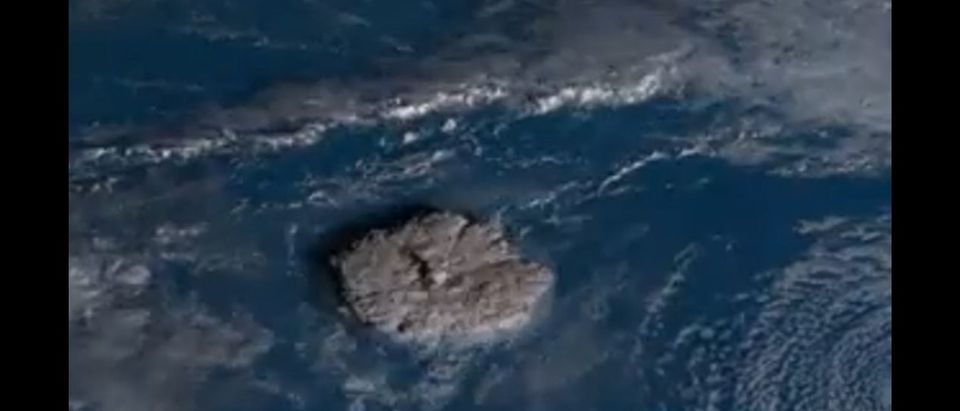The volcanic eruption that occurred in Tonga in January was hundreds of times more powerful than the nuclear bomb that destroyed Hiroshima, according to NASA.
The bomb dropped on Hiroshima, Japan in 1945 released 15 kilotons and the Tonga eruption released 4 to 18 megatons. The volcano eruption is estimated to be like dropping the Hiroshima bomb 1,200 times, according to Space.com. (RELATED: FACT CHECK: Does This Video Show A Volcanic Eruption In Tonga?)
FIRST OFFICIAL UPDATE FOLLOWING THE VOLCANIC ERUPTION FROM THE GOVERNMENT OF TONGA 🇹🇴 pic.twitter.com/fX3KPlKx2E
— Consulate of the Kingdom of Tonga (@ConsulateKoT) January 18, 2022
Chief scientist of NASA’s Goddard Space Flight Center, Jim Garvin and other researchers have been observing Hunga Tonga and Hunga Ha’apai since 2015 when a landmass formed joining the two islands together, according to NASA.
The Tonga volcano started erupting in late-December 2021 and into early January. The volcanic activity seemed normal at first with the volcano producing explosions of volcanic gases including tephra, ash, and steam, NASA reported.
That changed on Jan. 13-15 when a series of violent explosions sent ash up into the atmosphere, blanketing nearby islands. The explosions destroyed the landmass that connected the the two islands along with chunks of the two older islands, according to NASA.
“This is a preliminary estimate, but we think the amount of energy released by the eruption was equivalent to somewhere between 4 to 18 megatons of TNT,” Garvin said, NASA reported. “That number is based on how much was removed, how resistant the rock was, and how high the eruption cloud was blown into the atmosphere at a range of velocities.”
Garvin suggested that what he and his fellow researchers observed on the islands may teach about similar formations that can be found on Mars.
“Small volcanic islands, freshly made, evolving rapidly, are windows in the role of surface waters on Mars and how they may have affected similar small volcanic landforms. We actually see fields of similar-looking features on Mars in several regions,” Garvin said according to NASA.


